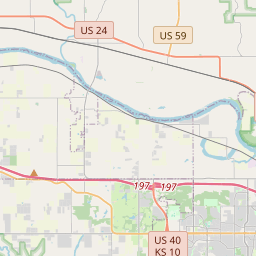Lawrence City [Carnegie] Library
Historical marker location:






1881: Andrew Carnegie, a Scottish-American industrialist and philanthropist, begins his philanthropic efforts in library construction by donating funds to build the Braddock Library in Pennsylvania.
1883: The first "Carnegie Library" is officially established in Dunfermline, Scotland, Carnegie's birthplace. This library serves as a model for future Carnegie Libraries.
1886: Carnegie writes an article titled "Wealth," where he articulates his belief in philanthropy and the responsibility of the wealthy to give back to society.
1889: The Carnegie Corporation of New York is established with the aim of funding the construction of libraries across the United States and other English-speaking countries.
1893: The first Carnegie Library in the United States, the Carnegie Library of Braddock in Pennsylvania, is opened to the public.
Late 1890s to early 1900s: The construction of Carnegie Libraries spreads rapidly throughout the United States and other parts of the English-speaking world, including Canada, the United Kingdom, Australia, and New Zealand. The libraries are often designed by prominent architects and feature diverse architectural styles.
1901: The Carnegie Corporation of New York is founded as a philanthropic organization to manage and administer Andrew Carnegie's charitable projects, including the library program.
1902: Carnegie makes a significant endowment, donating $10 million to establish the Carnegie Institute in Pittsburgh, Pennsylvania. The Institute includes a library, an art gallery, and a natural history museum.
1917: Andrew Carnegie dies, leaving a lasting legacy of philanthropy, including the establishment of thousands of libraries around the world.
1920s-1930s: The construction of Carnegie Libraries gradually slows down, and the focus shifts to maintaining and updating existing libraries to meet changing community needs.
Late 20th century to present: Many Carnegie Libraries undergo renovations, expansions, or repurposing to adapt to modern library services and technological advancements. Some continue to operate as public libraries, while others have been transformed into cultural centers, museums, community spaces, or educational institutions.
The Carnegie Libraries have left an indelible mark on the accessibility of knowledge and education. They remain a testament to Andrew Carnegie's belief in the power of libraries to uplift communities and provide opportunities for personal and intellectual growth.
The geographic center of the contiguous United States is located in a field near Belle Fourche, South Dakota, but a marker for it is located in a small town called Belle Plaine, Kansas.
In the mid-1800s, Douglas County played a crucial role in the "Bleeding Kansas" era, a period of conflict over whether Kansas would be a free or slave state. Lawrence, the county seat, was a stronghold for anti-slavery activists and had a significant impact on the national debate on slavery. The infamous Lawrence Massacre in 1856, where pro-slavery forces attacked the town, further intensified the tensions.
During the Civil War, Douglas County continued to be a center for abolitionist activities. The county's residents played vital roles in supporting the Union army and providing aid to escaped slaves traveling the Underground Railroad. The historic Eldridge Hotel in Lawrence served as a temporary headquarters for several Union generals.
In the post-war years, Douglas County experienced significant growth and development. The University of Kansas was established in Lawrence in 1866, becoming a major educational and cultural institution for the county and the region. As the county grew, agriculture played a vital role in its economy, with thriving wheat and dairy industries. Today, Douglas County continues to preserve its historical significance while embracing modern advancements and maintaining a strong sense of community.
Douglas County Timeline
This timeline provides a condensed summary of the historical journey of Douglas County, Kansas.
- 1854 - Douglas County, Kansas is established as a county
- 1855 - Lawrence, the county seat, is founded
- 1856 - Violence erupts in Lawrence during the "Bleeding Kansas" era
- 1863 - Quantrill's Raid on Lawrence results in the destruction of much of the city
- 1870 - The University of Kansas is founded in Lawrence
- 1903 - The United Spanish War Veterans Home is established in Leavenworth
- 1954 - Brown v. Board of Education Supreme Court case rules against racial segregation in schools
- 2008 - The closure of the Sunflower Army Ammunition Plant marks the end of an era